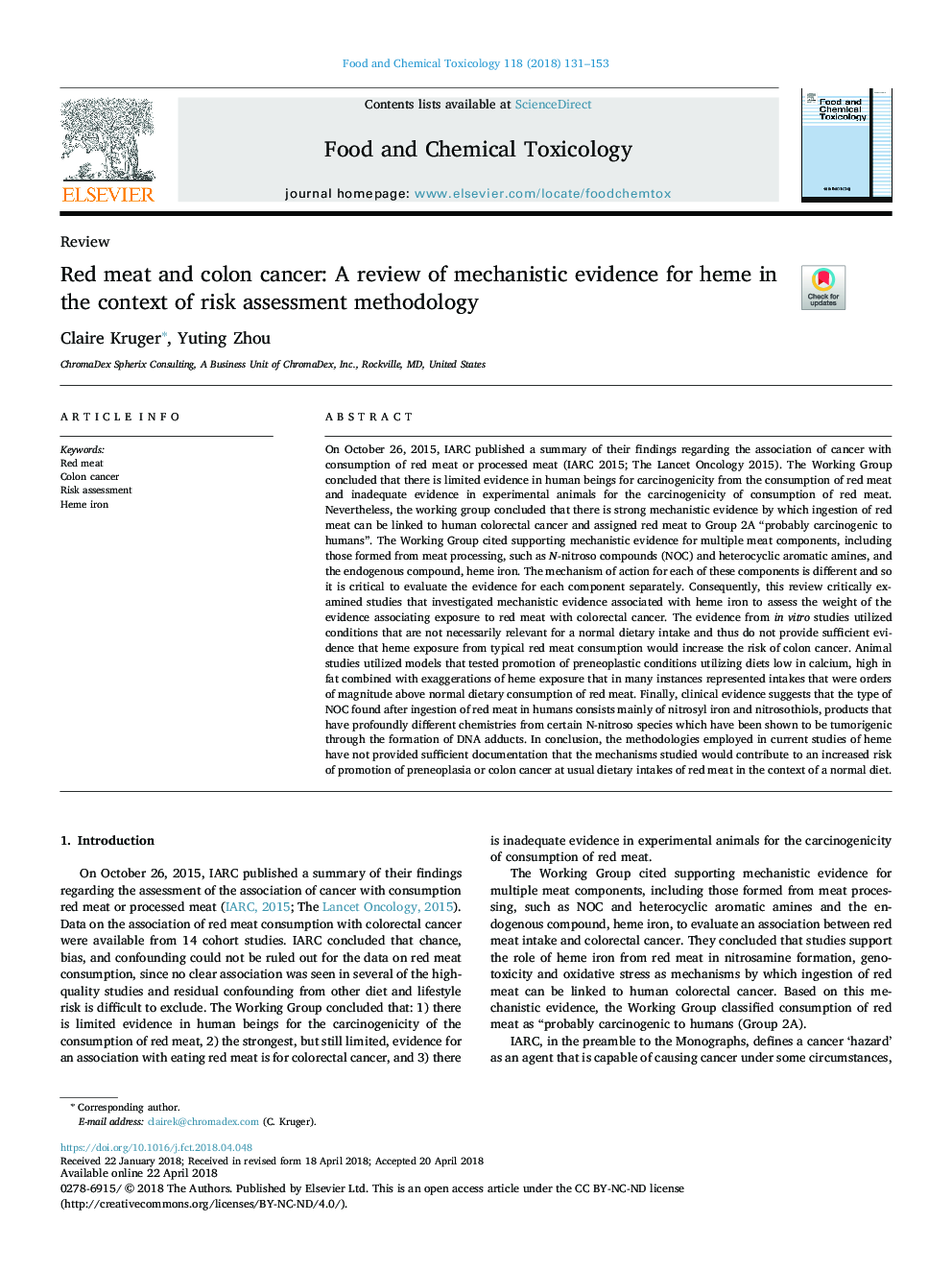| کد مقاله | کد نشریه | سال انتشار | مقاله انگلیسی | نسخه تمام متن |
|---|---|---|---|---|
| 8546869 | 1561727 | 2018 | 23 صفحه PDF | دانلود رایگان |
عنوان انگلیسی مقاله ISI
Red meat and colon cancer: A review of mechanistic evidence for heme in the context of risk assessment methodology
ترجمه فارسی عنوان
سرطان گوشت قرمز و سرطان روده بزرگ: بررسی شواهد مکانیکی برای هم در زمینه روش ارزیابی ریسک
دانلود مقاله + سفارش ترجمه
دانلود مقاله ISI انگلیسی
رایگان برای ایرانیان
کلمات کلیدی
گوشت قرمز، سرطان کولون، ارزیابی ریسک، هیمه آهن،
موضوعات مرتبط
علوم زیستی و بیوفناوری
علوم کشاورزی و بیولوژیک
دانش تغذیه
چکیده انگلیسی
On October 26, 2015, IARC published a summary of their findings regarding the association of cancer with consumption of red meat or processed meat (IARC 2015; The Lancet Oncology 2015). The Working Group concluded that there is limited evidence in human beings for carcinogenicity from the consumption of red meat and inadequate evidence in experimental animals for the carcinogenicity of consumption of red meat. Nevertheless, the working group concluded that there is strong mechanistic evidence by which ingestion of red meat can be linked to human colorectal cancer and assigned red meat to Group 2A “probably carcinogenic to humans”. The Working Group cited supporting mechanistic evidence for multiple meat components, including those formed from meat processing, such as N-nitroso compounds (NOC) and heterocyclic aromatic amines, and the endogenous compound, heme iron. The mechanism of action for each of these components is different and so it is critical to evaluate the evidence for each component separately. Consequently, this review critically examined studies that investigated mechanistic evidence associated with heme iron to assess the weight of the evidence associating exposure to red meat with colorectal cancer. The evidence from in vitro studies utilized conditions that are not necessarily relevant for a normal dietary intake and thus do not provide sufficient evidence that heme exposure from typical red meat consumption would increase the risk of colon cancer. Animal studies utilized models that tested promotion of preneoplastic conditions utilizing diets low in calcium, high in fat combined with exaggerations of heme exposure that in many instances represented intakes that were orders of magnitude above normal dietary consumption of red meat. Finally, clinical evidence suggests that the type of NOC found after ingestion of red meat in humans consists mainly of nitrosyl iron and nitrosothiols, products that have profoundly different chemistries from certain N-nitroso species which have been shown to be tumorigenic through the formation of DNA adducts. In conclusion, the methodologies employed in current studies of heme have not provided sufficient documentation that the mechanisms studied would contribute to an increased risk of promotion of preneoplasia or colon cancer at usual dietary intakes of red meat in the context of a normal diet.
ناشر
Database: Elsevier - ScienceDirect (ساینس دایرکت)
Journal: Food and Chemical Toxicology - Volume 118, August 2018, Pages 131-153
Journal: Food and Chemical Toxicology - Volume 118, August 2018, Pages 131-153
نویسندگان
Claire Kruger, Yuting Zhou,
